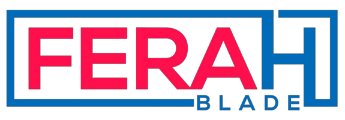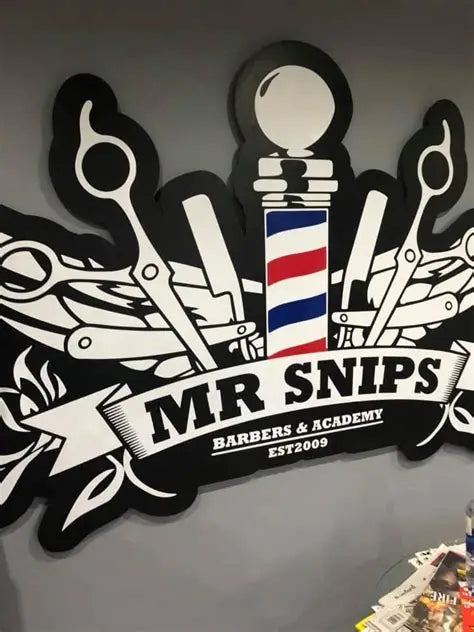How Long is Barber School Launch Your New Barbering Career
Embarking on a barbering career is an exciting journey. Understanding the barber school duration is crucial for planning your path.
Barber training length varies, typically ranging from 9 to 24 months. This depends on the program and state requirements.
Full-time programs can be completed in as little as 9 months. Part-time options may extend to 18-24 months.
Barber school schedules offer flexibility, with day, evening, and weekend classes available. This accommodates different lifestyles and commitments.
In this guide, we'll explore everything you need to know about barber school. From training length to schedules, we've got you covered.
Understanding Barber School Duration
Barber school duration depends on several factors, including program type and state mandates. Some programs can be as short as 9 months, while others take up to 24 months.
The primary factor affecting length is whether you choose full-time or part-time study. Full-time students usually complete the program faster.
Each state has its requirements for training hours. Typically, these range from 1,000 to 1,500 hours, which directly impacts the duration.
Barber school training typically includes a mix of theory and hands-on practice. To better understand, here are some key components:
- Theory Classes: Haircutting, styling, and sanitation education.
- Practical Training: Hands-on hair cutting, shaving, and other skills.
- Optional Courses: Some schools offer courses in business management or specific grooming techniques.
These elements collectively shape the time you spend in school, preparing you for a successful barbering career.
Factors That Affect Barber Training Length
Several factors influence barber training length. One of the most significant factors is the program type you choose. Full-time programs are usually shorter, compared to part-time schedules.
Another important factor is the state's requirements for completing the training program. States with higher mandated training hours lead to longer program durations.
Personal obligations also affect the training length. Some students prefer part-time schedules due to work or family commitments. Key factors that influence duration include:
- State Regulations: Different states have varied training hour requirements.
- Program Type: Full-time or part-time schedules.
- Specializations: Additional courses could extend program length.
- Personal Schedules: Balancing commitments with classes may affect training pace.
Typical Barber School Schedule Options
Barber schools offer flexible schedules to accommodate various lifestyles. Many programs provide day, evening, and weekend classes. This flexibility attracts students with different needs.
Day classes are ideal for those who can dedicate full time to training. On the other hand, evening or weekend classes suit individuals who work during the day. Understanding your availability helps in selecting a suitable schedule.
Students can often choose between various program durations and intensities. Common schedule options include:
- Day Programs: Usually more intense and shorter in duration.
- Evening Classes: Spread over a longer period to fit around work commitments.
- Weekend Courses: Allowing students to balance weekday jobs.
- Accelerated Programs: Intensive for rapid completion.
What You’ll Learn in Barber School
Barber school covers a broad range of skills essential for a successful barbering career. Students will engage in both theory and practical sessions, building a strong foundation in hair styling and maintenance. The curriculum is designed to prepare students thoroughly for the demands of the profession.
Instructors focus on key techniques, ensuring trainees can handle diverse client needs. Core subjects include haircutting, shaving, and styling practices. Proper sanitation and tool maintenance are also emphasized, underlining the importance of hygiene in the industry.
Here’s a snapshot of what is typically included:
- Haircutting Techniques
- Shaving Methods
- Styling and Grooming
- Sanitation Practices
- Chemical Treatments
- Basic Business Skills
These competencies equip students to excel and adapt within the ever-evolving barbering world.
State Requirements and Licensing
Becoming a licensed barber requires meeting specific state requirements. Each state sets its own rules, influencing the barber training length needed to qualify for exams. Aspiring barbers must complete a state-approved educational program before applying for their license.
Barber schools ensure their curricula align with these state mandates, typically encompassing 1,000 to 1,500 training hours. This extensive hands-on training prepares students for both the written and practical exams. Passing these exams is crucial for obtaining your barbering license.
Here’s what might be required:
- Completion of Required Hours
- Passing a Written Exam
- Passing a Practical Skills Test
- Continuing Education for License Renewal
Understanding the specific criteria for your state helps streamline the licensing journey. It also sets clear milestones for your barbering education and career.
Full-Time vs. Part-Time Barber Programs
Choosing between full-time and part-time barber programs depends on personal circumstances. Full-time options often allow students to graduate faster, sometimes within 9 months. This path suits those able to dedicate their full focus to studies.
In contrast, part-time programs offer flexibility, spreading coursework over 18 to 24 months. This option is ideal for individuals balancing work, family, or other commitments alongside their education.
Consider these factors when deciding:
- Availability for classes
- Work and family responsibilities
- Need for quicker completion
- Preference for a more flexible schedule
Evaluating these elements helps determine which schedule aligns best with your lifestyle and career goals.
Barber School Costs and Financial Aid
Barber school tuition varies widely, ranging from $5,000 to $20,000. Costs depend on the school's location, reputation, and the length of the program. For many students, this investment is significant but necessary for launching a barbering career.
Thankfully, there are financial aid options to ease the burden. Many schools offer scholarships, grants, or payment plans. It's crucial to explore:
- Scholarship opportunities
- Available grants
- Payment plans and loans
These aids make barbering education more accessible and affordable, helping students focus on mastering their craft without financial stress.
Apprenticeships and Alternative Paths
For those seeking a less traditional route, apprenticeships offer a unique learning experience. These programs combine on-the-job training with classroom instruction, providing real-world skills in a barber shop setting.
Alternatives like online courses supplement practical training. Consider these options if you:
- Prefer hands-on learning
- Seek mentorship in a working environment
- Need flexibility in your education path
Launching Your Barbering Career After Graduation
Graduating from barber school is just the beginning of your career journey. With your license in hand, numerous opportunities await in the barbering industry.
Consider these paths:
- Open your own barbershop
- Join an established salon
- Offer freelance barbering services
Networking is crucial in this field. Connect with instructors and peers to find job openings and explore potential collaborations. This support can propel your career forward, helping you establish your presence in the barbering community.
Frequently Asked Questions About Barber School Duration
Many aspiring barbers have questions about the time commitment required. Understanding the barber school duration helps in planning your educational journey.
Common queries include:
- How long is a typical barber program?
- Can I attend part-time?
- What are the daily hours like?
These questions help prospective students gauge the best fit for their schedules and career goals. Addressing them ensures a smoother path to achieving your barbering ambitions.





Leave a comment
This site is protected by hCaptcha and the hCaptcha Privacy Policy and Terms of Service apply.